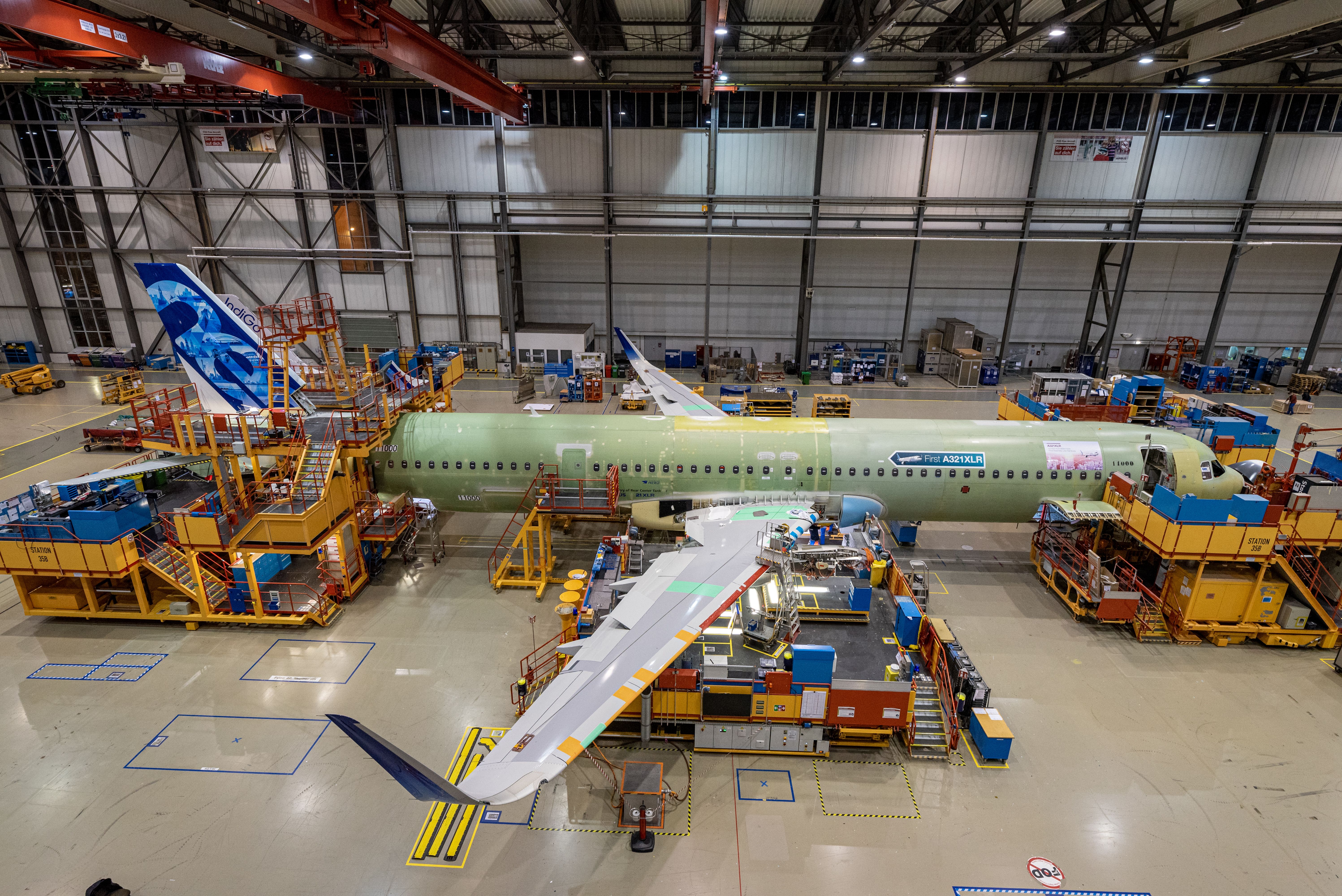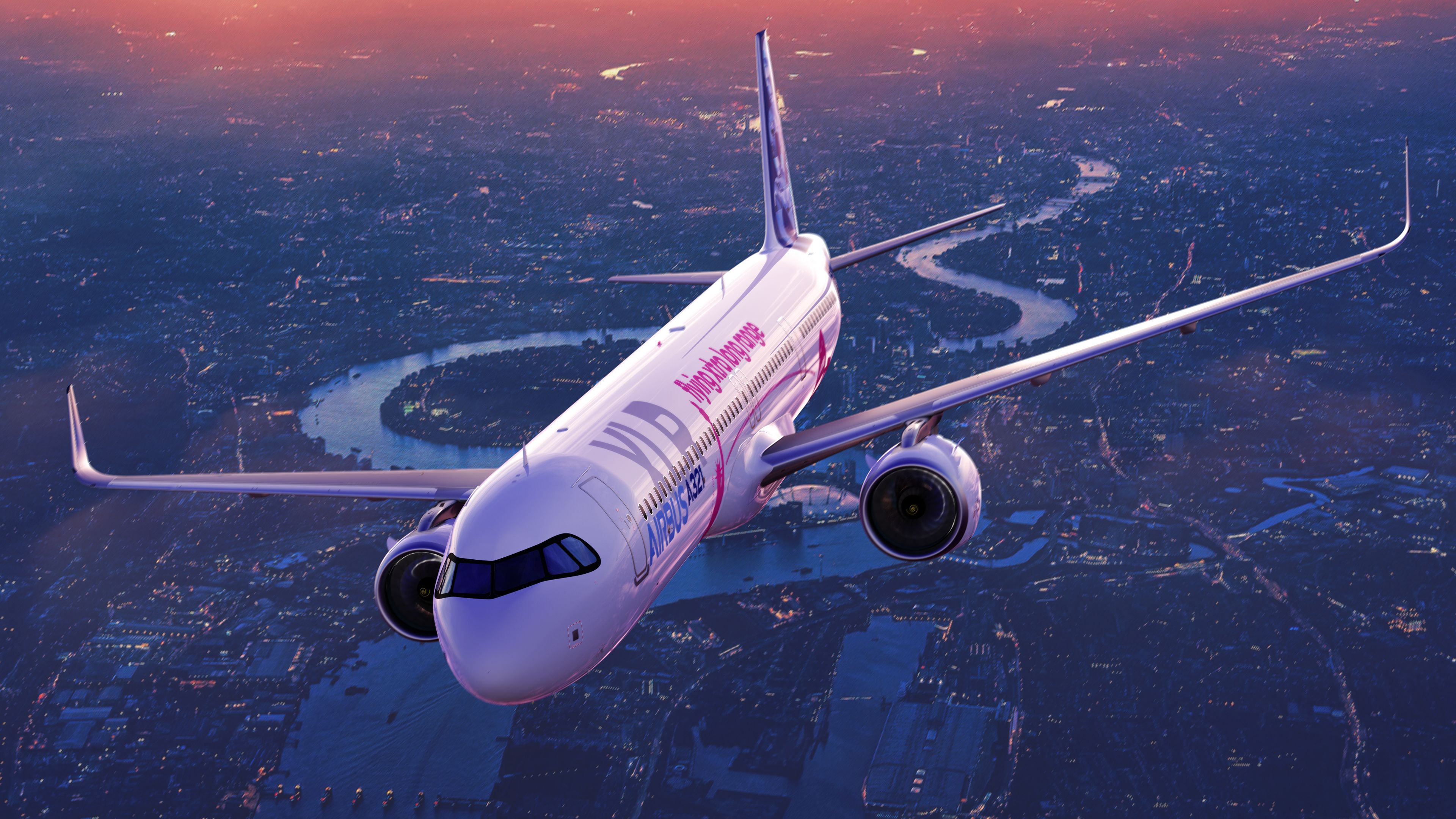It’s more than three years since the Airbus A321XLR burst onto the world stage at the Paris Airshow. When the next Paris Airshow comes around in 2023, Airbus expects to have the A321XLR close to certification and on track to enter service in 2024. There is much more to this program than an extra fuel tank, and with more than 500 orders to fill, Airbus is steadily moving through the process.
Three XLRs by the end of this year
Airbus is building three A321XLR prototypes and expects all to be flying by the end of 2022. Photo: Airbus
On June 15, the first A321XLR (XLR), known internally as FTV1, spent four and a half hours in the skies above Hamburg, Germany, on its maiden flight. The following two prototypes are in advanced stages of manufacture, and Airbus expects that by the fourth quarter of this year, it will have all three XLR prototypes actively flying. There is also a fourth test aircraft, an upgraded A321neo fitted with new features designed for the XLR.
Once all four are in operation, global flight testing will be underway, as ground testing continues to finalize the standard modifications. Gary O’Donnell is head of the A321XLR program, and he says, “the completion of these activities and submission of all the final documents around the end of next year to the airworthiness authorities will allow us to validate and certify the complete aircraft. This will enable us to deliver what the airlines need on day one when the A321XLR enters service in 2024.”
Beyond the aircraft, Airbus and its supply chain partners have to build the industrial system to produce the XLR and all of its components. This involves all the tooling, jigs and other physical infrastructure at production sites worldwide. The third leg of the stool is to have all the ground support equipment and customer services documentation ready before the first XLR is delivered.
The XLR has 30% more range than a 321neo
The A321XLR has a range of 4,700NM and can fly 11 hours nonstop, putting Delhi within easy reach of London. Photo: Airbus
The XLR will have a range of 4,700 nautical miles (5,400 miles) and be able to fly nonstop for around eleven hours. This makes city pairs like New York-Rome, Delhi-London and Sydney-Kuala Lumpur possible while retaining the superior single-aisle economics of a narrowbody. The XLR can fly around 30% further than an A321neo and 15% further than an A321LR, so it needs to carry more fuel, increasing the maximum take-off weight (MTOW). The heavier MTOW means upgrading, among other things, the landing gear and braking systems, which have to be flight-tested and certified.
With the engine thrust unchanged, Airbus has made aerodynamic changes to maintain its required take-off performance. Several new features have been fitted to the upgraded A321neo, making it aerodynamically the same as the XLR once the landing gear is retracted. The XLR will hold an extra 12,900 liters (3,400 US gallons) of fuel in the integral rear center tank, so there is a new fuel system that also needs to be tested and certified.
Airbus is doing something new by certifying two engine types in parallel rather than one at a time. This shows the value of multiple test aircraft, with FTV1 fitted with the CFM LEAP-1A engine and FTV2 powered by the P&W GTF. It also gives Airbus the flexibility to test characteristics on either airplane, speeding up the process as it wades through more than 100 test flights.
FTV3 has to prove the XLR to customers
There will be soon more first flights for the second and third A321XLRs off the production line. Photo: Airbus
The third new build, FTV3, will mainly be used for cabin-related testing and route-proving purposes. The thought of spending eleven hours in a narrowbody may be offputting, so cabin comfort and amenity will be paramount to the XLR’s success. To achieve that, Airbus is fitting an upgraded cabin to the XLR, which it says is “closer to what is offered in our standard long-range aircraft.” The XLR has a lot of expectations to live up to, so FTV3 will do customer demonstration flights on routes, such as the long-haul city pairs mentioned earlier, airlines want to operate with the XLR.
After three years in the doldrums, it’s an exciting time for aviation, and the next two years will see the A321XLR blossom and come to life. The A321LR is setting the stage, and Airbus seems to have the right momentum to get the XLR ready to make its debut on time in 2024.
[ad_2]
Source link






